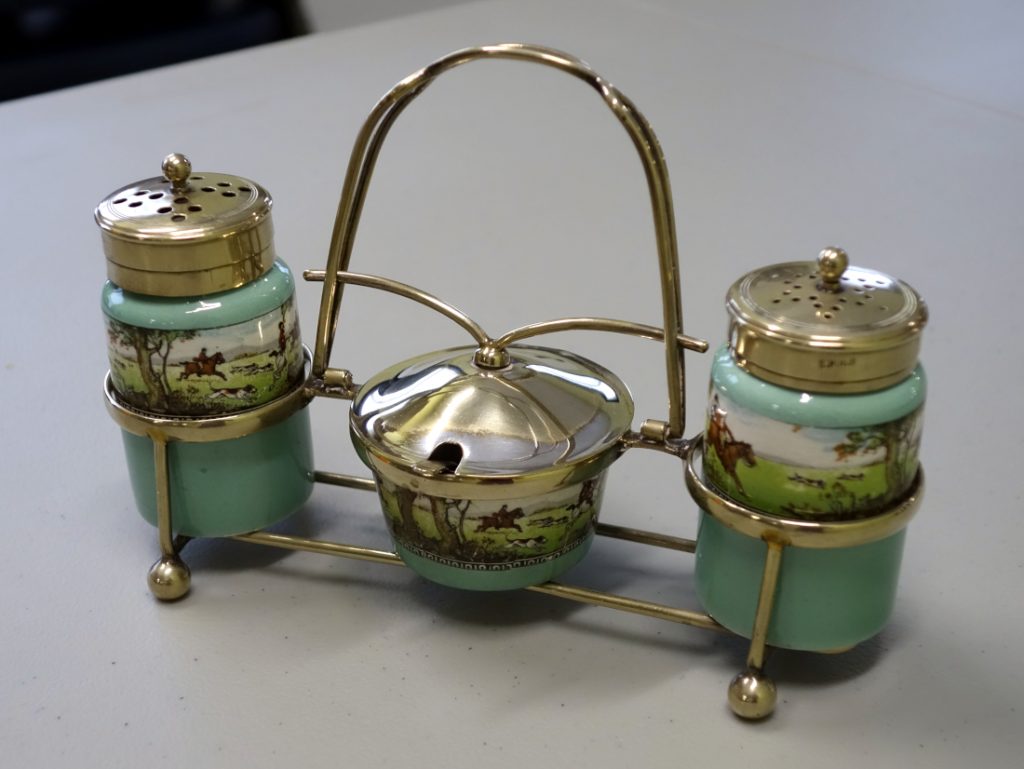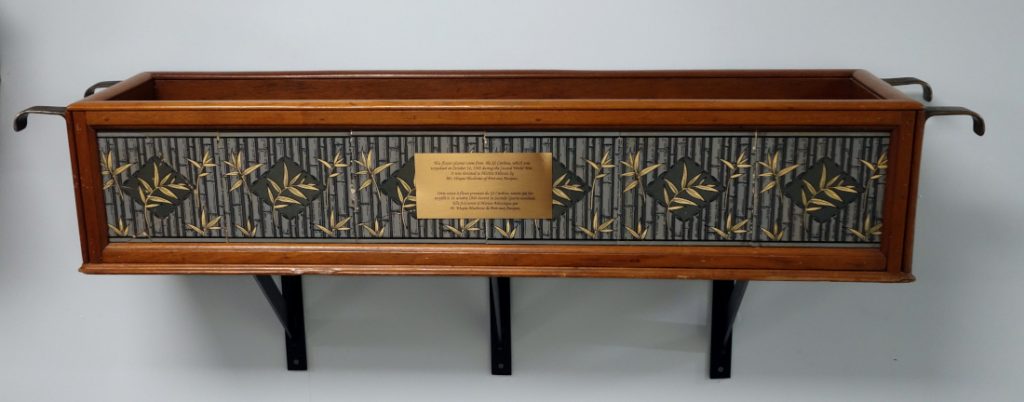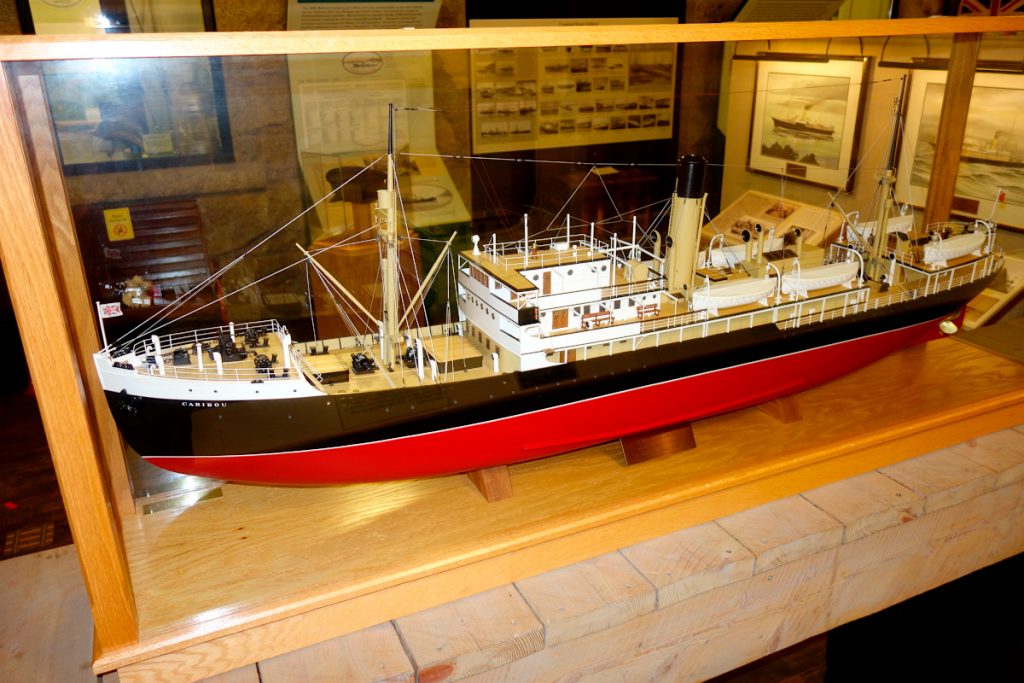Museum artifacts from S.S. “Caribou”
Skipper James Kettle of Grand Bay listed everything left of S.S. Caribou in his statement to the Magisterial Enquiry:
“During the finding of the wreckage we saw five rafts in good shape, and several broken ones. We also saw two lifeboats full of water. There was a lot of matchwood floating about.”
While searching for bodies, Captain George Carter of Francois picked up the ship’s binnacle and a box of drugs. But, even if he wanted to look, most of the flotsam was not worth salvaging.
Still, over the years, people gave artifacts to Captain Ben Taverner’s family. When the ship had been converted to electric lights, someone kept a wall-mounted oil lamp with a gimbal mount, specially designed to remain balanced despite the constantly swaying ship.
Oil lamp from S.S. Caribou. Click here to learn more about the oil lamp.
In 1930, S.S. Caribou ran aground near Mouse Island. Heavy furniture and ornaments were jettisoned. Part of this jetsam, a flower box, was scavenged. That box and the oil lamp are now displayed in the Port aux Basques Railway Heritage Museum.
In St. John’s, the Provincial Archives store the original blueprints of S.S. Caribou and the Railway Coastal Museum displays the engineering model constructed by the Rotterdam shipbuilders in 1925. The model is a perfect replica, built to scale to test the design before beginning construction on the ship.
Other than these few artifacts, all that’s left of S.S. Caribou are personal items found on a few recovered bodies. The Taverner family still has Captain Taverner’s pocket watch, which stopped just before 4:00 am.




